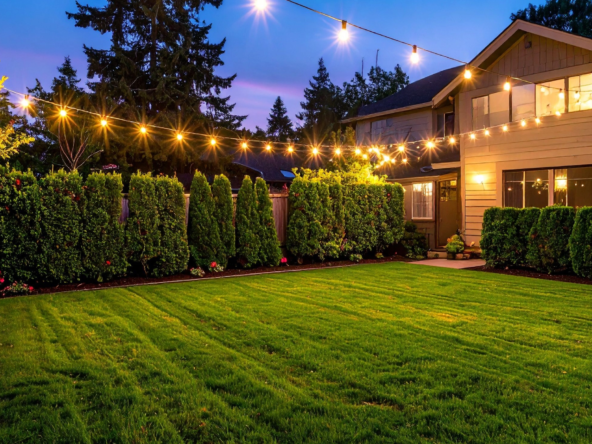TLDR
- Traditional MLS maximizes exposure and price; expect roughly 61 median days to sell.
- FSBO can save commissions but risks 5–15% lower price and longer timelines.
- Cash offers close in 7–14 days but often discount 10–20% below market value.
- Eagle’s 2.8 months of supply favors accurate pricing and polished presentation today.
What does choosing a sale strategy in Eagle really mean?
Choosing between a traditional MLS listing, For Sale by Owner, or a cash offer is really about aligning your goals, timeline, property condition, and risk tolerance with today’s local market. In fall 2025, Eagle is operating in a more balanced environment, with roughly 2.8 months of inventory and a median of about 61 days on market. The typical sale-to-list ratio hovers near 98–99 percent, which means buyers still pay close to list when homes are accurately priced and well prepared. These conditions shape which path serves you best.
As an Eagle Idaho realtor who lives this market daily, I frame each option through net proceeds, certainty, and speed. The right choice depends on factors like whether your home is turnkey in a sought-after subdivision, whether you can invest in prep, and how flexible you are on timing. If getting top dollar is your priority and you have a normal move-out timeline, the traditional route generally delivers the strongest results. If certainty of timing is critical, a cash route can be the right fit even with the discount. And FSBO can work for certain properties in highly competitive microsegments if you already have a buyer pool.
Here is how I define it as Chris Budka:
- Traditional: full-market exposure, professional marketing, and negotiation to optimize net.
- FSBO: owner-led sale with cost savings but greater risk and work.
- Cash offer: speed and certainty with a trade-off in price and terms.
How does the current Eagle market shape your best strategy?
Local data from the Intermountain MLS indicates Eagle’s median sale price sits around the upper $700,000s as of October 2025, with a median 61 days on market and about 2.8 months of supply. Active listings are in the high 200s, which gives buyers more choices than the ultra-tight periods of recent years. The sale-to-list ratio is near 98.6 percent in Eagle, while Ada County averages slightly less. These numbers underscore the importance of pricing within 1–2 percent of market value to capture early momentum.
Compared to national trends, the National Association of REALTORS reports that many metros moved toward balance through 2024 and into 2025, with longer marketing times and modest negotiation returning in typical price bands. In other words, skilled positioning, professional marketing, and condition still matter a lot. For homes needing updates or with functional quirks, additional pricing precision and timing strategy are critical. If you are considering capitalizing on future growth, watch planned development and inventory forecasts via the City of Eagle’s Community Development updates.
What do the numbers imply for pricing in practice?
In a market where buyers typically pay within 1–2 percent of list on well-priced homes, pricing even 5 percent above fair market can push you outside the active buyer pool. Overpricing often leads to fewer showings, more days on market, and eventual reductions. The strongest results come from pricing near true market value, elevating presentation, and driving a strong first two weeks of activity.
Which neighborhoods illustrate different paths to sell quickly?
Neighborhood dynamics matter in Eagle. Proximity to amenities, community features, and buyer profiles vary by subdivision, which can influence your path.
– Details: Large, master-planned community with lakes, trails, and golf nearby. Popular with move-up and relocating buyers. – Watchouts: Premium pricing must be justified with staging and presentation since nearby competition is robust. – Typical timeline: 30–60 days to pending when priced within 1–2 percent of market, based on Intermountain MLS patterns.
- Island Woods
– Details: Mature, river-adjacent enclave with direct access to the greenbelt and community amenities. – Watchouts: Unique homes vary widely; accurate pricing requires a granular CMA with true like-kind comps. – Typical timeline: 35–65 days when cosmetic updates and photography highlight water features and outdoor living.
- Two Rivers
– Details: Luxury-focused with water features, paths, and custom homes that draw high-end buyers. – Watchouts: Luxury buyers are selective; pre-inspections and discrete pre-market outreach can reduce friction. – Typical timeline: 45–75 days in the luxury segment, faster for updated homes with compelling outdoor spaces.
Near my office on S Eagle Rd, I also advise clients in Brookwood and Eagle Hills. Patterns are similar: accurate pricing plus high-quality marketing moves the needle. If you are positioning an Eagle Idaho home for sale in these neighborhoods, consider pre-inspection, light updates, and targeted digital promotion to capture that critical first wave of buyers.
What are the pros and cons of Traditional, FSBO, and Cash Offer?
Traditional MLS Listing
Pros:
- Highest price potential through full-market exposure and negotiation.
- Professional marketing, photography, staging, and contract management support.
- Broader buyer pool, often yielding stronger terms and cleaner appraisals.
Cons:
- Longer timeline vs cash; plan for 30–60 days plus closing.
- Prep costs and showings require time and coordination.
- Appraisal and financing contingencies introduce some uncertainty.
FSBO
Pros:
- Potential savings on listing commission if managed well.
- Direct control over showings and negotiations.
- Works for turnkey properties in highly sought-after microsegments.
Cons:
- Risk of underpricing or overpricing without MLS-grade data.
- Typically sells for less than agent-listed homes in balanced markets.
- Legal, disclosure, and contract risks; buyer agents may resist unrepresented sellers.
Cash Offer
Pros:
- Speed and certainty; many close within 7–14 days.
- As-is condition more acceptable; minimal prep and no showings.
- Flexible occupancy or leaseback often negotiable.
Cons:
- Discount to market, often 10–20 percent below likely MLS price.
- Fewer competing offers, reducing leverage.
- Certain investors add fees that reduce net proceeds further.
How do I execute each path step-by-step, and what will it cost?
For traditional listing, success rests on smart pricing and standout presentation. Expect some or all of the following:
- Comparative Market Analysis anchored to Intermountain MLS data.
- Pre-inspection to surface surprises early, typically 350 to 600 dollars.
- Light updates: paint, hardware, landscaping tune-up, often 1,500 to 5,000 dollars.
- Staging for key rooms, typically 1,000 to 3,000 dollars for occupied homes.
- Professional photography and media, commonly 300 to 800 dollars.
- Typical seller closing costs run 6 to 10 percent, including commissions, title, and escrow.
For FSBO, you will need:
- MLS alternative exposure or a flat-fee listing service, plus sign and lockbox.
- Disclosure forms, offer review, inspection negotiation, and appraisal guidance.
- Showing coordination, safety protocols, and buyer verification workflows.
- Budget for media and staging similar to a traditional listing.
- Legal counsel or transaction coordination to reduce risk.
For cash offers:
- Two to three investor bids for comparison.
- Quick walk-through and proof of funds.
- Settlement statement review to confirm net proceeds and fees.
- Close in 7 to 14 days in many cases.
One of my clients in Legacy had a pristine home and a normal move-out timeline. We priced within 1 percent of market, invested about 2,200 dollars in prep and media, and listed with full exposure. We accepted an offer at 99 percent of list with modest concessions and closed in 34 days. The net beat a recent cash estimate by roughly 11 percent.
Another client in Island Woods needed certainty due to a job relocation. We explored both routes, collected two cash bids, and prepped only for basic show-readiness. They selected a cash offer that closed in 10 days. While the price was below likely MLS value, the certainty and speed fit their goals perfectly.
If you are home selling in Eagle Idaho, and unsure which path is right, I will build you a side-by-side net sheet and timeline so you can choose with confidence. That is what the best realtor in Eagle Idaho should deliver.
FAQs
1) How long will it take to sell my Eagle home right now? Intermountain MLS indicates a median of about 61 days on market in Eagle as of October 2025, with many well-prepared homes going pending within 30 to 45 days. Luxury and unique properties often require more time. Pricing within 1–2 percent of market and investing in presentation can trim days and strengthen terms, especially in neighborhoods like Legacy and Two Rivers.
2) How should I price to avoid reductions and still maximize my net? Start within 1–2 percent of your supported market value based on a detailed CMA using true like-kind comps. Lean on early showing feedback and data. If the first 14 days do not generate qualified showings or second appointments, adjust quickly. In a market where buyers pay near 98–99 percent of list for well-priced homes, accurate launch pricing is key to stronger net proceeds.
3) When does FSBO make sense in Eagle? FSBO can work when your home is turnkey, demand in your price band is strong, and you have time and comfort handling disclosures, negotiations, and inspections. It is most viable for common floor plans with abundant comps. If your home is unique, in the luxury tier, or likely to face appraisal complexity, representation by an experienced Eagle ID real estate agent usually pays for itself.
4) What is a realistic discount on a cash offer? Cash offers trade price for speed and certainty. In balanced conditions, discounts of 10–20 percent are common, depending on condition and investor fees. If timing is critical or your home needs significant work, a clean cash offer closing in 7–14 days may be worth the trade-off. I gather multiple bids and present a clear net sheet so you can compare options accurately.
5) What are typical seller costs I should plan for? Plan for 6 to 10 percent of the sale price to cover commissions, title, escrow, taxes, and potential concessions. Add 350 to 600 dollars for a pre-inspection, 300 to 800 dollars for media, and 1,000 to 3,000 dollars for staging in most cases. Repair budgets vary, but light refreshes in kitchens, baths, and landscaping often deliver strong returns in Eagle’s subdivisions.
6) How could future development in Eagle affect my listing? Additional supply from approved or planned communities can influence pricing and time on market. Monitoring City of Eagle planning updates helps anticipate new phases, amenities, or road improvements that impact buyer demand. If nearby inventory is scheduled to increase, consider listing before competing releases or elevating your presentation to stand out. I track these updates for clients and adjust strategy accordingly.
Conclusion
The bottom line Your best path is the one that optimizes your net proceeds, aligns with your timeline, and fits the realities of today’s market. Traditional MLS listing generally delivers the strongest price in Eagle when you launch near true market value, invest in presentation, and leverage broad exposure. FSBO can work for turnkey homes when you are equipped to manage risk and marketing. Cash offers are the right tool when certainty and speed outweigh top-dollar pricing. If you are preparing an Eagle Idaho home for sale, I will build a side-by-side comparison with a clear CMA, timeline, and net sheet so you can choose confidently.










